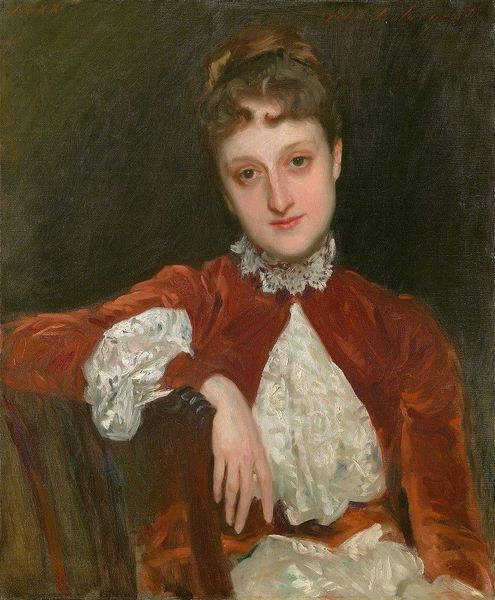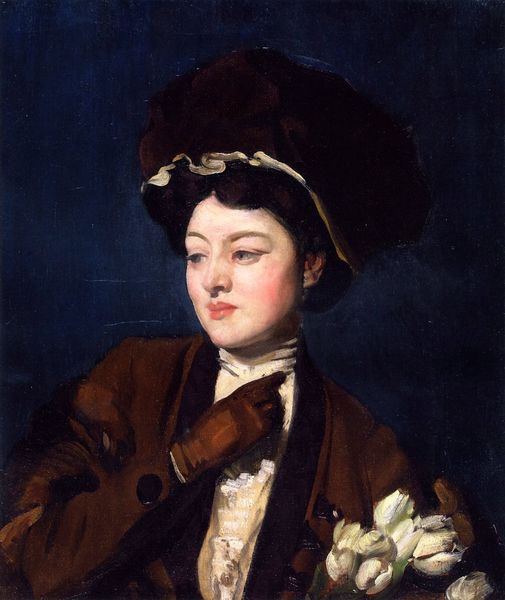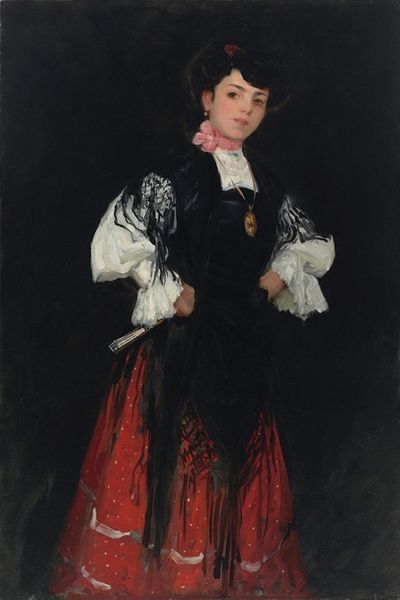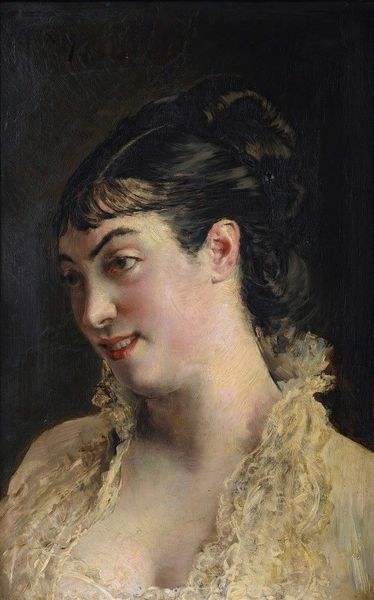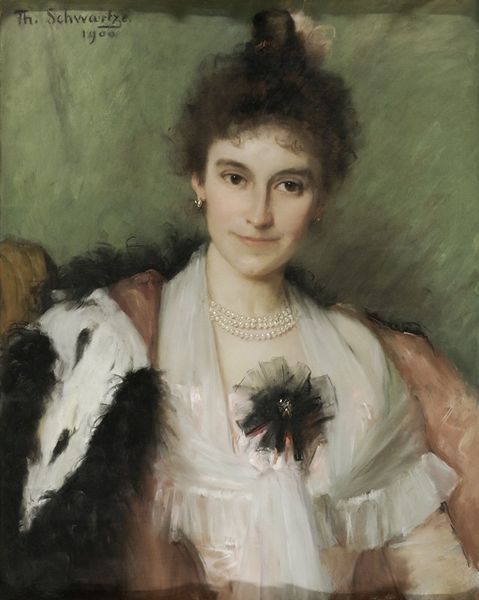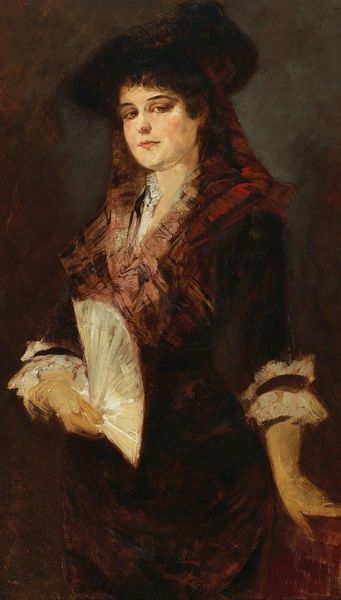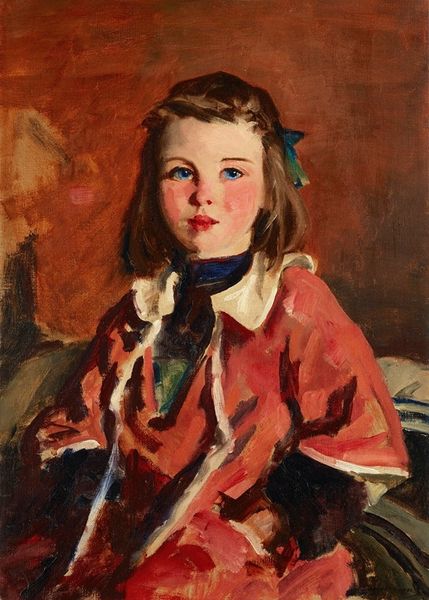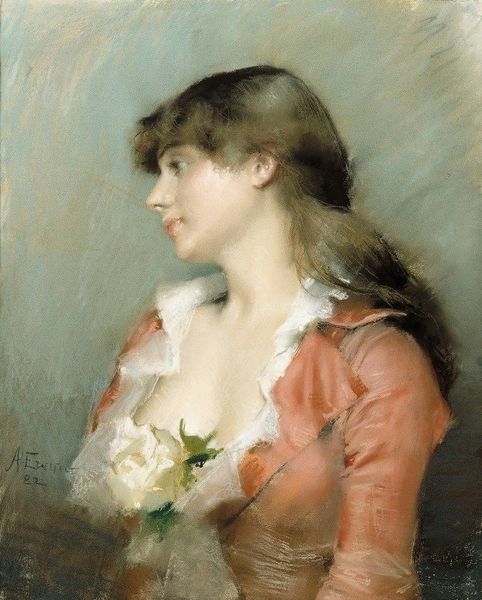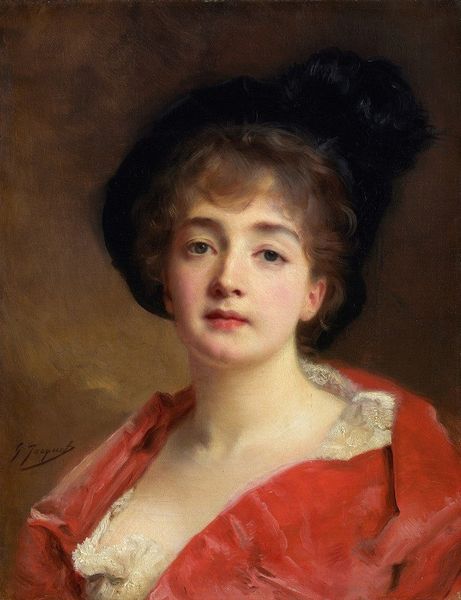
Copyright: Public Domain: Artvee
John Singer Sargent painted "Mademoiselle Suzanne Poirson," a portrait that serves as a window into the world of upper-class European society. Sargent, an American expatriate, was deeply entrenched in the social circles of the Belle Époque. His portraits often captured the fashionable elite, showcasing their wealth and status. Here, Suzanne Poirson is portrayed with a quiet elegance, embodying the demure femininity expected of young women in her social sphere. However, the portrait is not simply a record of affluence. The deliberate composition, the carefully chosen attire—the fur stole, the striking red bow—all speak to a constructed identity. It raises questions about the artist's role in shaping perceptions and the subject's own agency in portraying herself. The subtle gaze of Mademoiselle Poirson hints at an inner life, a sense of self that exists beyond the confines of social expectations. Consider how Sargent balances the visual cues of class with the individual's own expression of identity, making us reflect on the complexities of representation and personhood.
Comments
No comments
Be the first to comment and join the conversation on the ultimate creative platform.
